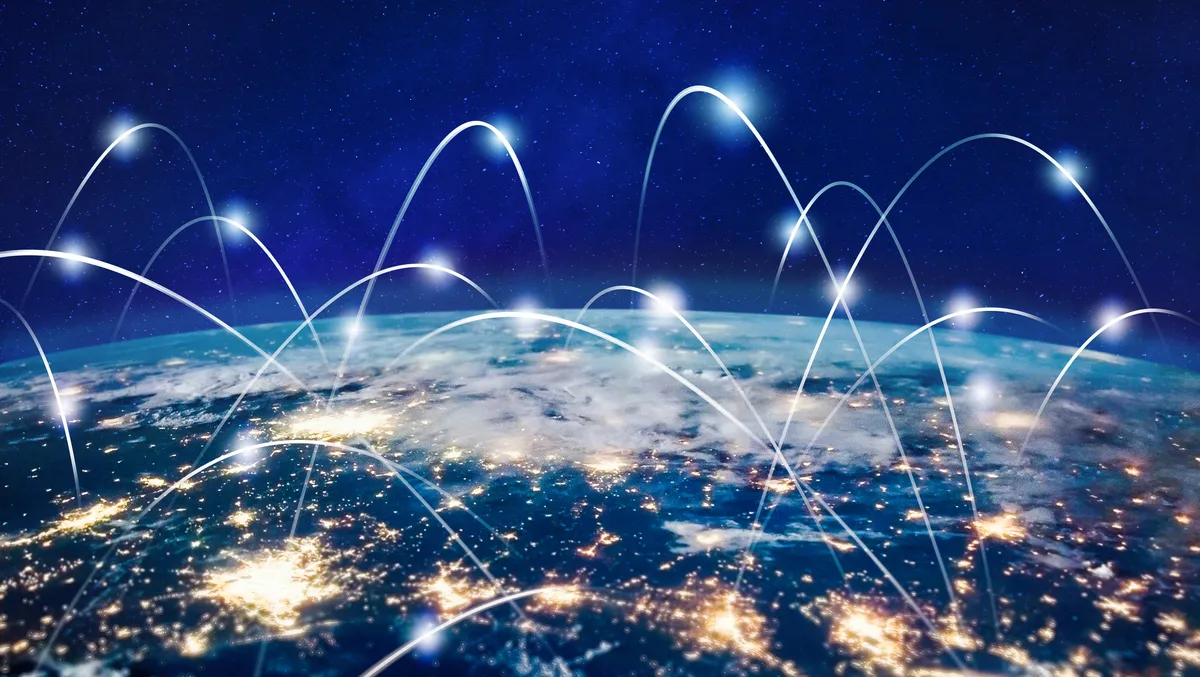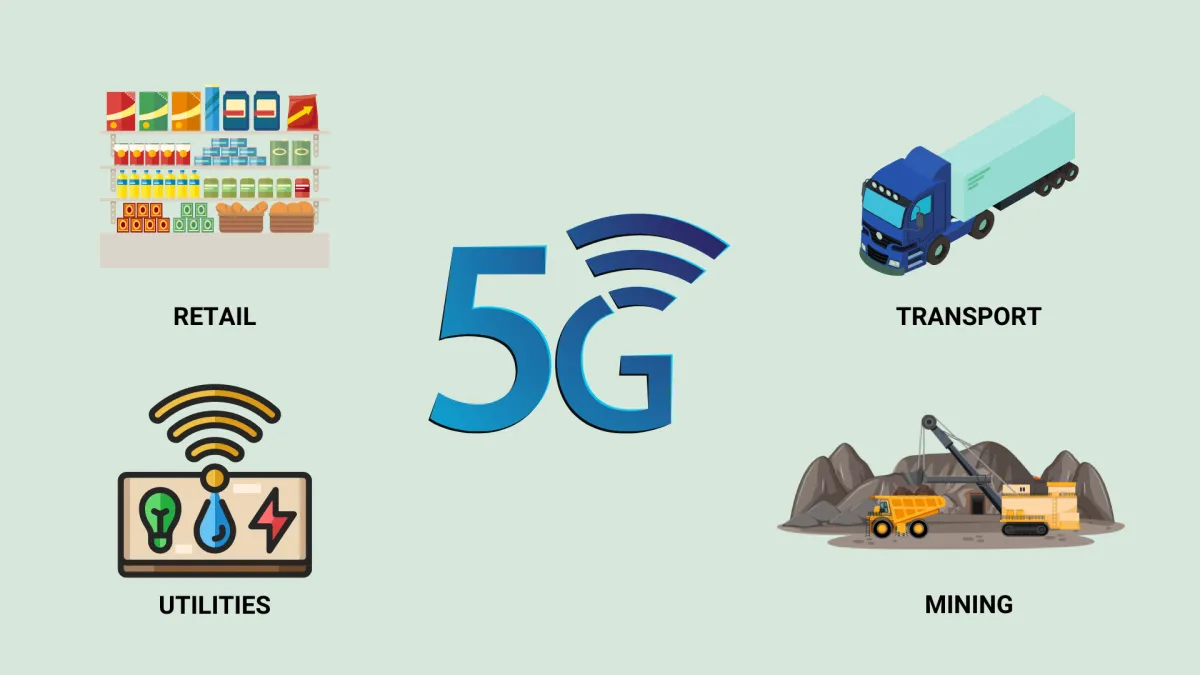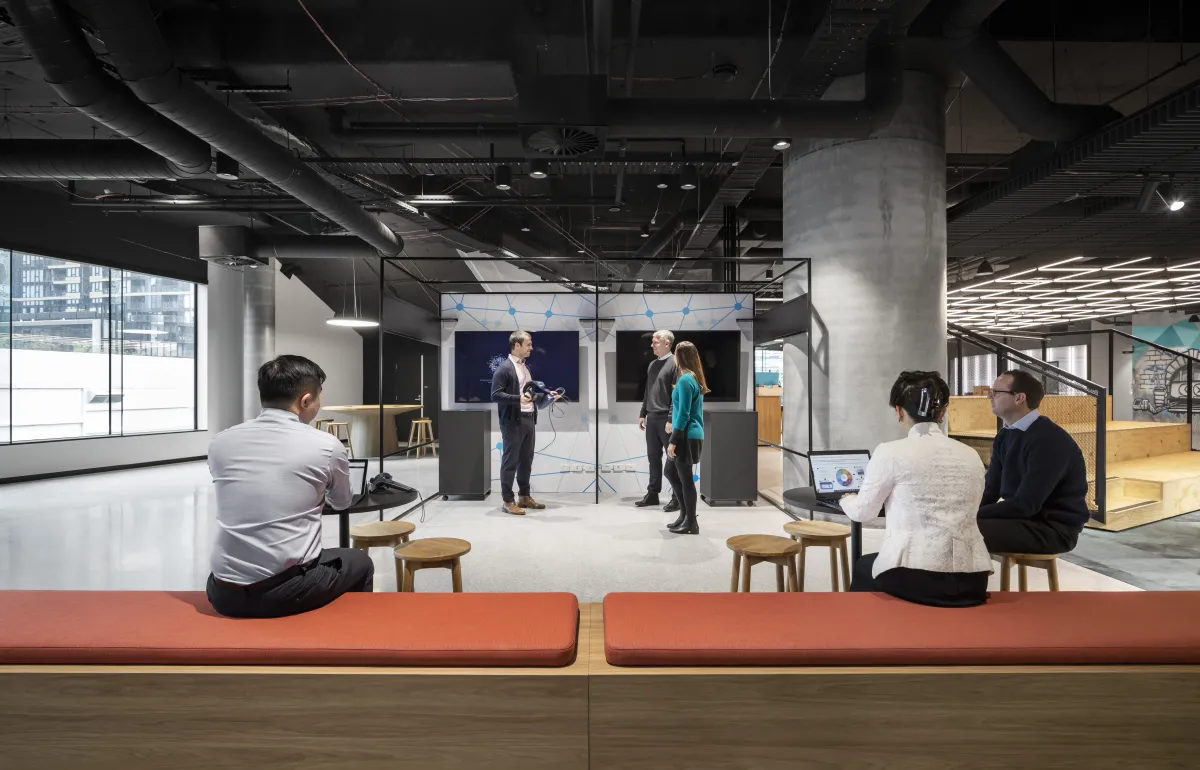
5G: Revolution not evolution
5G is not just an incremental change from predecessors like 3G and 4G. Instead, it's a technological revolution that completely changes how information is shared. 5G helps power high-bandwidth computing with low latency and machine-to-machine communication, enabling emerging technologies like Extended Reality, Artificial Intelligence, and IoT, among others. The characteristics of 5G mean that the technology complements Wi-Fi very well, and true Interoperability with Wi-Fi can help drive better business outcomes.
According to recent research by the World Economic Forum (WEF), 5G is set to accelerate applications across sectors including Manufacturing, Mobility, Retail, and Energy, among others and drive significant impact on SDGs. The Forum predicts that 5G has the potential to grow the global GDP by $3.6 trillion by 2030.
How can 5G help to revolutionise physical industries?
Numerous physical industries are set to undergo 5G-powered revolutions. These industries include:
Mining
There is scope for significant cost savings in the mining sector thanks to 5G. We have already seen examples of mining companies saving hundreds of millions of dollars using 5G to conduct more precise mapping for road resurfacing, leveraging dynamic connectivity in mines and asset tracking, among others. These applications of 5G have helped mining companies reduce the volume of materials and labour required for the process.
Transport
Adelaide Airport has used 5G for remote diagnostics to better understand issues around the precinct. This means they can avoid sending people out to provide diagnostics. Instead, they can instantly and remotely see what the problem is, precisely where it is, and the tools and expertise required to fix the issues. This increased understanding can improve business processes and efficiencies. Furthermore, applications like guided vehicles for transporting people and goods, and AI image analysis, can significantly help improve efficiencies and safety at shipping and transportation hubs like airports.
5G can also be used to improve safety, as seen in the rail industry. Rail operators can harness 5G-powered remote hazard identification. This lets them prepare for hazards ahead of time, rather than having to make decisions on the fly that can significantly impact both safety and operations.
Retail
5G helps to create connected retail stores. Edge devices such as sensors and cameras in stores can help understand product interactions and movements in the store, providing a better understanding of customer behaviour. This data can then be used to build personalised and sophisticated consumer experiences. Analysis of interactions between customer representatives and consumers can also unlock further customer service improvements.
Ultra-low latency and large bandwidth provided by 5G-powered real-time analytics can also help store executives assist customers in their purchases. 5G-powered edge platforms can play a significant role in optimising store operations and inventory management.
Insights into consumer demands and expectations, reliable connectivity, effective store management, and immersive extended reality use cases like virtual try-on look set to help drive profitability in the retail sector and provide world-class customer experiences.
Utilities
5G-enabled solutions can help to contain the risks of wildfires and power outages. A complete view of the current and forecasted vegetation states is critical for an effective workflow to mitigate these risks. Currently, these inspections are performed manually using helicopters/UAVs/drones. The inspection data captured is then inspected offline.
During the inspection of these captured images, if any issues are detected, the drone or helicopter must be redeployed to get additional information. Unfortunately, by this time, it may be too late to manage the issue. With 5G, many high-definition images and videos can be captured in real-time and transmitted at extremely high speeds. AI and deep learning-based solutions help isolate vegetation from the power lines and compute safe clearance distance from the vegetation. If any issues are detected, drones can zoom in to capture high-definition images of the impacted area for further analysis.

So how can we accelerate 5G adoption?
Ecosystem integration
To make 5G work, it is important for the ecosystem of players to work together. The key players are technology owners, telcos, network service providers, product owners, and system integrators. Systems integrators can help businesses accelerate testing and deployment and improve time to market.
Simplify the backend
5G backends are considered to be complicated, and implementation currently requires a sophisticated understanding of the technology. The key to unlocking the power of 5G and making it accessible to the masses is to simplify these backends, which is what many technology owners are working towards.
Overcoming the perception of significant upfront investment
Businesses must be able to see the return on investment quickly to want to invest. If 5G champions are able to better communicate the cost savings and monetisation opportunities that come from 5G, then economic buyers are more likely to use resources to adopt 5G technologies.
Organisations today can leverage pre-built vertical-specific use cases as a starting point which can help accelerate the adoption of 5G and monetisation opportunities.
What are the next steps for 5G?
Test and learn facilities become critical in helping enterprises understand 5G's full potential and how they can overcome perceived challenges to apply its use cases to their businesses. One such example is the Infosys 5G Living Lab. Access to the Living Lab gives Infosys' partner ecosystem a simulated 5G environment for rapid experimentation of new technologies, combining the best of emerging technologies expertise in areas like IoT, AR, VR and AI and human experience expertise.

Infosys' Living Labs in Melbourne and Sydney empower Infosys' partner ecosystem to more effectively address and test things like defining business use cases and ROI, co-creating and innovating solutions and use cases, creating proofs of concept (PoCs) using its solution and accelerators along with technology providers and partners, and testing and validating the solutions.
The time is now for companies to start planning and executing the rollout of 5G technologies across their business, as 5G can help both physical and digital industries flourish.